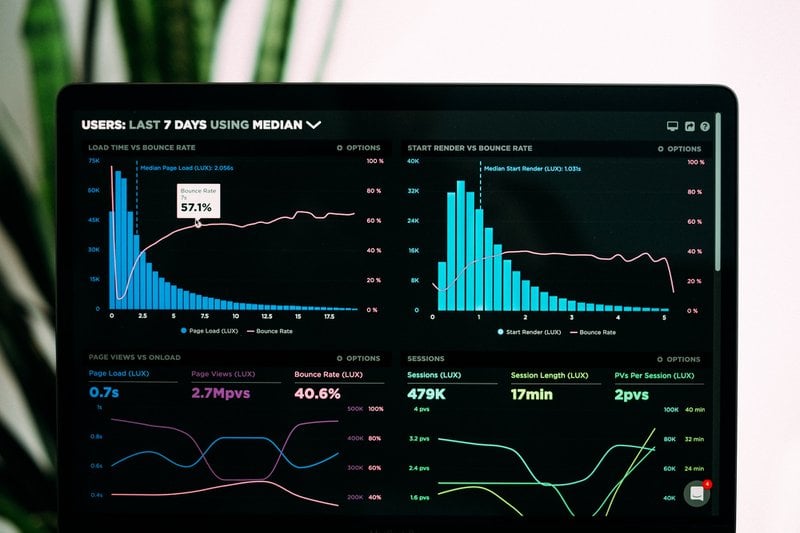If you’re new to Google Analytics, you might ask yourself “What is a UTM source?” and “How do I use one?”. Google Analytics, Google’s data measurement service, uses UTM sources to retrieve audience tracking data. In other words, a UTM source is advantageous for digital marketing campaigns and web analytics. If you’re new to Google Analytics or coding in general, you’re probably unsure where to start. You came to the right page. This article will discuss the importance and the application of UTM sources so you can better collect audience tracking data.
Table of Contents
UTM Source
UTM source is an acronym that stands for Urchin Tracking Module. To clarify, a UTM source is a Google tracking URL. To put it another way, a UTM source is a code that tracks audience behavior. A UTM source is attached to a URL to track conversions which helps calculate ROI. Conversions and ROI or Return on Investment are important factors to measure when determining the success of your website or digital marketing campaigns. UTM sources are widely used for social media ads. You’ve probably seen or interacted with one if you’ve ever clicked on an ad while browsing social media. It “hangs” at the end of a URL and sends trafficking information back to Google Analytics.
To demonstrate, go on Facebook and hover over a link for an ad. If you’re on desktop, you’ll see the URL displayed on the lower left or right corner of your screen. At the end of the link preview, you’ll see “utm_source=facebook&utm…” That portion of the URL is the UTM source code.
Types of UTM Sources
You can use a UTM source in a variety of ways. They can be attached to social media digital marketing campaigns, paid keyword campaigns, and ad campaigns. To demonstrate, the Facebook ad is an example of a UTM source social media campaign. For keywords, the UTM code would look similar to a social media one except instead of Facebook, it’ll be the keyword. For example, you decide to have a BOGO sale for your t-shirt company. The UTM phrase would look like “utm_term=bogo” at the end of the page URL. Lastly, you can use a code to track individual ads in a digital marketing campaign. If you use more than one social media platform, it’s normal to have different variations of an ad. The UTM phrase could look like “utm_content=white_banner” at the end of the page URL.
If an ad for one of your digital marketing campaigns falls beneath all these categories, you can use more than one of these UTM phrases in one URL. Each phrase will be separated by a “&.” Go back to Facebook and find another ad. In the link preview, you’ll see each UTM phrase separated by the “&” symbol. These phrases can help you differentiate between different ads in a single marketing campaign.

UTM sources can be used for:
- Newsletters
- Banners
- Social Media
- A/B Testing
- eBooks
- Promotions
- QR Codes
- Mobile Apps
- Ads
- Marketing
- Landing pages and links
Different UTM Source IDs
Campaign ID. A campaign ID is represented by a “utm_id” in the UTM tracking link. Use it to identify a singular ad in a campaign. For example, “utm_id=123abc&…”
Campaign Source. A campaign source is represented by a “utm_source” in the UTM tracking link. Use it to identify a search engine or a source. For example, “utm_source=instagram&…”
Campaign Medium. A campaign medium is represented by a “utm_medium” in the UTM tracking link. Use it to identify a specific medium such as CPC (cost-per-click). For example, “utm_medium=social&…”
Campaign Name. A campaign name is represented by a “utm_campaign” in the UTM tracking link. Use it to emphasize keywords for promotions. For example, “utm_campaign=buy_one_get_one_free&…”
Campaign Term. A campaign term is represented by a “utm_term” in the UTM tracking link. Use it to emphasize keywords in paid searches. For example, “utm_term=graphic+t-shirt&…”
Campaign Content. Campaign content is represented by a “utm_content” in the UTM tracking link. Use it for A/B testing. For example, “utm_content=image&…”
If you decide to create your own UTM source link, the campaign ID, campaign source, and campaign medium parameters can be placed in any order. Furthermore, you don’t have to use campaign name, campaign term, and campaign content parameters when creating a UTM tracking link. However, you must include a question mark (?) before the first UTM parameter and separate each parameter with an ampersand (&). A completed UTM source link should look similar to this:
https://awesomegraphictees/en_us/productpage.00001.html?utm_id=123abc&utm_source=instagram&utm_medium=social&utm_campaign=buy_one_get_one_free&utm_term=graphic+t-shirt&utm_content=image
Why You Should Use a UTM Source
A UTM source is a great measuring tool to record audience metrics. The best way to serve your audience is to know who they are and what they want. Furthermore, you can use ads or other marketing messages that best appeal to your audience. Let’s say you have two ads you’ll like to use for your t-shirt business. A UTM source will help you gather data on the ad’s performance. Through A/B testing you can see which ad creates more ROI and conversions. For the sake of the example, let’s say the first ad or Ad A has twice as many conversions and greater ROI than Ad B. You found this data through the UTM source you attached to the URLs of each ad. Since Ad A performs better, it’s the ad you use on all of your social media platforms.

Moreover, a UTM source helps you find audience tracking data for specific ads. For instance, if you have more than one metric you’ll like to measure, you can retrieve data for that specific metric. Let’s revisit the graphic t-shirt example. You have a social media post, a promotional banner on your webpage, and an ad on another website you want the tracking data for. A UTM tracking link will make it easier for you to measure the audience tracking data for these metrics. If you can determine how well your target audience is reacting to your digital marketing plan, you can better cater it to their needs. As a result, you can have more conversions and a greater ROI.
How to Use a UTM Source
Now that we know what a UTM source is and why it can be beneficial to your digital marketing plan or website, how do we use it? If you’re wondering if you have to write each UTM source for every URL for every ad in your campaign, take a sigh of relief. You can use UTM sources outside of Google Analytics, but Google Analytics allows you to use them with their UTM source generator. In case you use a different web analytics program, there are other services that offer UTM tracking link generation without the need for Google Analytics.
Google Analytics
Before you create a UTM source code through Google Analytics, you must set up Google Analytics for your website. Once that step is completed, you can use Google’s free URL builder. A URL builder is an online service that makes custom campaign parameters for advertising URLs. With Google’s URL builder, you can create unique URLs for different ads or links. Google currently has three URL builder generators: Google Analytics Campaign URL Builder, Google Play URL Builder, and iOS Campaign Tracking URL Builder. However, for digital marketing campaigns, you’ll primarily use the Google Analytics Campaign URL builder.
First, navigate to the Campaign URL Builder tab on the Google Analytics Demos and Tools page. Next, you’ll see empty prompts asking for a website URL, campaign ID, campaign source, and campaign medium. Fill in the blanks with the necessary information. Without delay, the URL builder will automatically generate a URL with a UTM source attached to it.
Google Analytics Alternatives
You don’t have to use Google Analytics to take advantage of UTM tracking links for your digital marketing plan. Moreover, you don’t have to write a UTM tracking link yourself if you don’t have Google Analytics. There are several alternative URL builder services available for you to use.

Hubspot
Hubspot has its own web analytics software as well as a UTM tracking link generator tool. First, download Hubspot’s “Marketing Tool” software if you haven’t already. Next, locate the “Reports” tab on your marketing hub dashboard. Under reports, you should find the “Analytics Tools” tab. Click on this. Locate the “Tracking URL Builder” button in the lower right-hand corner. There will be a blank form asking for a URL, type of UTM campaign, source, UTM medium, UTM term, and UTM content. To track other campaigns with different UTM tracking codes, navigate to your Traffic Analytics Dashboard. Click on the “Other Campaigns” tab to manage your other UTM source codes.
UTM Builder
UTM Builder is a free URL builder that functions similarly to Google’s Campaign URL Builder. Additionally, UTM Builder creates UTM spreadsheets. A UTM spreadsheet is used to store and organize UTM source links. UTM Builder’s interface is identical to Google Analytics’ Campaign URL Builder. There will be a blank form asking for a URL, UTM source, UTM medium, UTM content, and UTM term.
Utm.io
Utm.io is a UTM generator and storage service. They offer four packages that range from $0 to $159+ per month. Luckily, their generator is a free service. Their UTM code builder is identical to Google Analytics’ Campaign URL Builder. There’s a blank form asking for a URL, UTM source, UTM medium, UTM content, and UTM term. Select “Build URL” to receive your unique UTM tracking code.
Do you want to learn more about UTM sources and how they can benefit you and your business? SEO Design Chicago offers digital marketing, SEO, and web analytics services. Visit us at seodesignchicago.com and schedule a consultation with us today.
FAQs
- What is a UTM source?
- How do you use a UTM source?
- What are free UTM source options?
- How to make UTM source?
- What is UTM short for?



Contact Us Today!